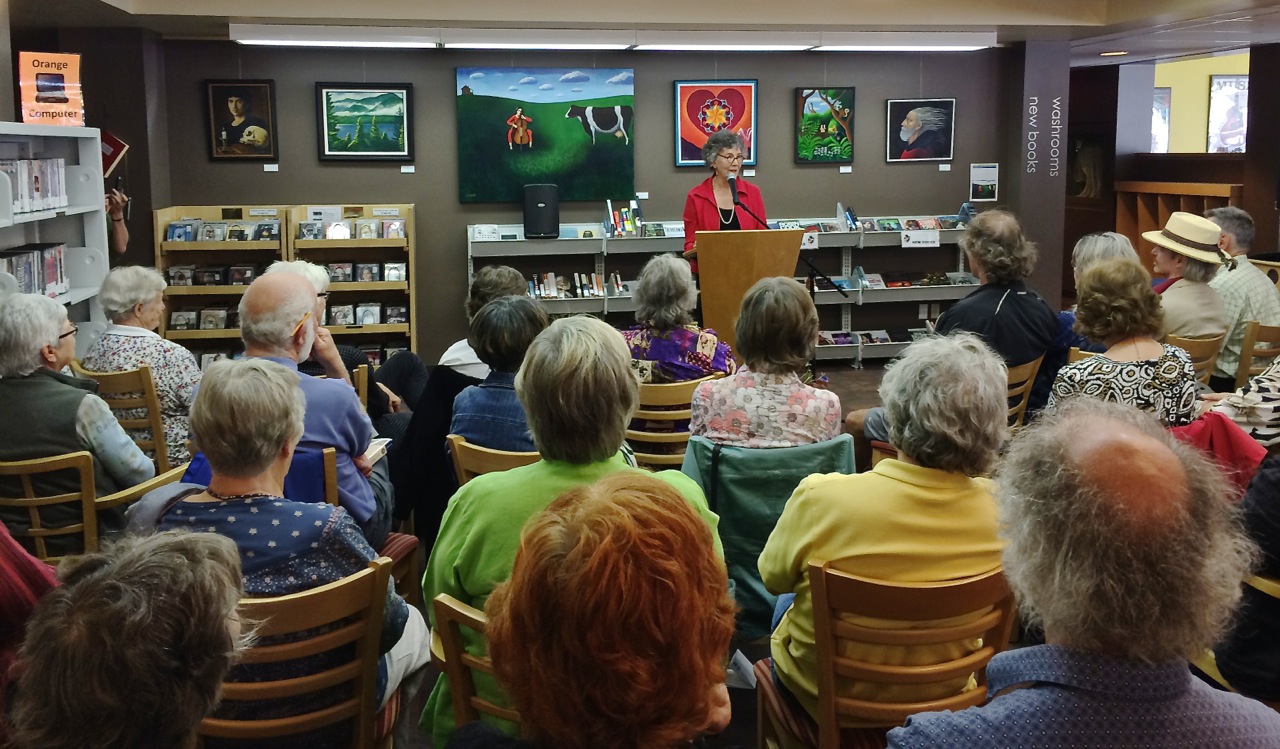Haven't posted for far too long. Put it down to:
a) taking a deep breath after April's daily poem extravaganza
b) on book-making projects
c) working on the garden
d) on taking ever longer walks in preparation for doing half the
Camino this fall (yes; you read that right!)
e) on my own writing
Notice what comes in last. Why is that?
In addition, I've been reading up a storm. As I mentioned in a previous post, I came home from the Cascadia Poetry Festival in Seattle with lots of reading material and I've been delving into that, very much enjoying the work of Marilyn Stablein, Joanne Arnott, Sharon Cumberland, George Stanley, Joanne Kyger, and Lyn Coffin.
Then there was a Nelson B.C. book launch with Vangie Bergum and Art Joyce, both books of creative non-fiction, both published by Hagios Press. I read a lot of poetry, so it was nice to sink into something different. I enjoyed reading both of them.
Vangie's book is Downstream: Bestemor and Me. I read the first few pages and was hooked. It's a braided story of a mysterious tragedy that happened in Bergum's family in the 1920s that, through the course of the book, she unravels, coupled with the story of how she trained to run the Great Wall of China marathon in 2008. It's a page-turner. Vangie Bergum really knows how to tell a story.
 |
| Vangie Bergum reading from Downstream: Bestemor and Me |
Art, who publishes under his full name, Sean Arthur Joyce, launched Laying the Children's Ghosts to Rest — Canada's Home Children in the West, an account of the history of the British children who were sent to Canada (and Australia) from 1869 into the 1960s to be placed with families, often on farms, often expected to work as labourers.
While the subject matter decrees that this is not an easy book to read, I found it fascinating. Imagine children, some as young as four or five years old, being "rounded up" and put into care homes because their families had fallen on hard times and couldn't afford to look after them properly. Sometimes the parents turned the children over to these homes. Then imagine some of those children — more than 100,000 between 1869 and 1949 — being sent by ship to Canada where they were taken into homes and farms as labourers. Needless to say, it didn't always go well for these children. Nor, in fairness, did it always go badly, depending on where the children ended up.
The author's grandfather was one of these "home children", and as is often the case when a child is traumatized, he never elaborated on his experience. Joyce was not aware of his past until, wondering what could have brought his grandfather to Canada by himself at age 16, he began looking into it in 2007.
Both books include photographs which very much add to the telling of the stories.
§
§

No comments:
Post a Comment